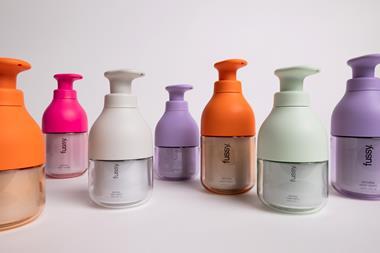Any company in doubt about the effectiveness of viral marketing need only look to events late last year when consumers queued around the block at Threshers stores across the country to redeem their 40%-off vouchers.
The coupon, offered as a discount to family and friends of company employees via email, was seized upon by consumers who forwarded it through cyberspace to about one million inboxes. Not bad for a free mail drop.
Opinion is divided as to whether the email frenzy was a mistake or shrewd marketing. But the notion that it was highly effective is universal.
Yet the incident has raised awkward questions about viral campaigns. The lack of control Threshers had once it pressed "send" on its first email will be of great concern to many planning their own campaigns, as will the potential for abuse by the public. The message to the industry is that, yes, viral campaigns have benefits, but companies need to be savvy if they are to reap them.
Thresher chief executive Roger Whiteside maintains the offer was a success, with so many more bottles "selling at a positive margin" and thousands of new customers converted to the cause. However, at the height of the offer the business did admit profit margins could suffer.
The message is that companies need to take great care when issuing electronic vouchers. Sainsbury's announced earlier this month that customers would no longer be able to redeem most e-voucher codes on its website. The move came in response to what it terms 'misuse' due to a small number of customers repeatedly inputting the same code to gain large discounts.
Toy retailer Hamley's attracted negative publicity last month when a computer glitch allowed shoppers to use 20% discount vouchers intended for staff. The mistake allowed them to key in three discount codes per purchase - producing a combined discount of 60%. When the errors came to light, the orders were cancelled.
These cautionary tales shouldn't put companies off, says Chris Friend, account director at brand company Liquid Communications. "E-coupons are significantly more trackable than traditional coupons, from distribution and consumer print-off to individual personalised barcodes. It is a far more flexible environment than offline. Used over time to build up a relationship it can also improve responsiveness and help brands improve the accuracy of their communications and targeting."
Drinks brand Innocent has successfully used electronic vouchers, initially targeting 'family members' in its database as part of a relationship marketing programme devised by Liquid Communications. "When it comes to an ethical brand such as Innocent, consumers understand we are using data to their advantage," says Friend. "That said, it is important to deliver value to consumers and the Innocent Family does just this." Companies will be smarter in the wake of the Threshers incident, predicts Gavin Male, director of TMNmedia, which delivers about 50 million emails a month to people on its databases. "Companies will, for example, start allowing individuals to register for vouchers in exchange for providing details and completing profile information. This can then lead to the generation of a unique barcoded voucher allowing redemption to be tracked in-store."
Improved technology will certainly iron out many of the problems retailers have met. "Vouchers can be redeemed online instantly, but technology has to be deployed to prevent mis-redemption," says Mike Teasdale, planning director at interactive ad agency Harvest Digital. "Either that, or retailers can use self-liquidating offers where the value of a sale gives them a profit even with a discount voucher."
It is not just vouchers that are effective online tools. Internet ads continue to grow in popularity - not the irritating pop-ups but ones consumers actually want to see and pass on to friends. Video-sharing websites such as YouTube are the focus for many of these ads. And, because of their high traffic of like-minded people surfing each day, they attract campaigns that are slightly more avant garde than those shown on TV. Charmin toilet paper, for example, resorted to toilet humour last summer with an advert that played on popular euphemisms for when nature calls. Shot as a sequence of actions, it showed people literally spending a penny or laying a cable.
Humour seems to be key. For Unilever's Lynx brand, for instance, creative agency the Viral Factory produced a three-minute spoof news report from an Alaskan town that had a shortage of women until the lonely male residents sprayed their entire community with Lynx.
Spoof adverts are also popular. In 2005 the Danish Bacon & Meat Council commissioned an internet animation showing a cooked breakfast come to life in the form of a human shape and dance in the style of David Brent from TV programme The Office. Around two million people passed on the 40-second animation, which mimicked the popular Citroen C4 transformer TV ad.
The acclaimed 'bouncing ball' Sony TV advert was spoofed in a viral campaign from Britvic Soft Drinks. The internet ad swapped bouncing balls for tonnes of fruit, and received more than 560,000 hits in the first six days. More recently, a Pepsi Max-branded channel on YouTube encouraged consumers to upload videos showing how they would maximise their day.
But before a company rushes to put something on web or email, careful consideration is required. "The danger with email is that because it's comparatively quick to deploy, people tend to think of it tactically - 'quick, what shall we do for Christmas?'" says Simone Barratt, MD of email marketing company e-Dialog. "Actually it's about building dialogue." She urges companies to consider their reputation when working on campaigns. "Use the data, don't abuse it. Don't just blast anything off to people."
Nick Adderley, director of retail marketing consultancy Addviser, says: "A big advantage with email is that the consumer feels part of a privileged group, when many of the high-street stores are offering discounts anyway. But if too many people receive the voucher, as happened with Threshers, it becomes humdrum. Retailers need to maintain the exclusivity of the offer."
The huge technological advances of recent years have opened up vast viral possibilities. Those companies that plan their activities with great care will not only avoid digital disaster but may find huge success in cyberspace.
The coupon, offered as a discount to family and friends of company employees via email, was seized upon by consumers who forwarded it through cyberspace to about one million inboxes. Not bad for a free mail drop.
Opinion is divided as to whether the email frenzy was a mistake or shrewd marketing. But the notion that it was highly effective is universal.
Yet the incident has raised awkward questions about viral campaigns. The lack of control Threshers had once it pressed "send" on its first email will be of great concern to many planning their own campaigns, as will the potential for abuse by the public. The message to the industry is that, yes, viral campaigns have benefits, but companies need to be savvy if they are to reap them.
Thresher chief executive Roger Whiteside maintains the offer was a success, with so many more bottles "selling at a positive margin" and thousands of new customers converted to the cause. However, at the height of the offer the business did admit profit margins could suffer.
The message is that companies need to take great care when issuing electronic vouchers. Sainsbury's announced earlier this month that customers would no longer be able to redeem most e-voucher codes on its website. The move came in response to what it terms 'misuse' due to a small number of customers repeatedly inputting the same code to gain large discounts.
Toy retailer Hamley's attracted negative publicity last month when a computer glitch allowed shoppers to use 20% discount vouchers intended for staff. The mistake allowed them to key in three discount codes per purchase - producing a combined discount of 60%. When the errors came to light, the orders were cancelled.
These cautionary tales shouldn't put companies off, says Chris Friend, account director at brand company Liquid Communications. "E-coupons are significantly more trackable than traditional coupons, from distribution and consumer print-off to individual personalised barcodes. It is a far more flexible environment than offline. Used over time to build up a relationship it can also improve responsiveness and help brands improve the accuracy of their communications and targeting."
Drinks brand Innocent has successfully used electronic vouchers, initially targeting 'family members' in its database as part of a relationship marketing programme devised by Liquid Communications. "When it comes to an ethical brand such as Innocent, consumers understand we are using data to their advantage," says Friend. "That said, it is important to deliver value to consumers and the Innocent Family does just this." Companies will be smarter in the wake of the Threshers incident, predicts Gavin Male, director of TMNmedia, which delivers about 50 million emails a month to people on its databases. "Companies will, for example, start allowing individuals to register for vouchers in exchange for providing details and completing profile information. This can then lead to the generation of a unique barcoded voucher allowing redemption to be tracked in-store."
Improved technology will certainly iron out many of the problems retailers have met. "Vouchers can be redeemed online instantly, but technology has to be deployed to prevent mis-redemption," says Mike Teasdale, planning director at interactive ad agency Harvest Digital. "Either that, or retailers can use self-liquidating offers where the value of a sale gives them a profit even with a discount voucher."
It is not just vouchers that are effective online tools. Internet ads continue to grow in popularity - not the irritating pop-ups but ones consumers actually want to see and pass on to friends. Video-sharing websites such as YouTube are the focus for many of these ads. And, because of their high traffic of like-minded people surfing each day, they attract campaigns that are slightly more avant garde than those shown on TV. Charmin toilet paper, for example, resorted to toilet humour last summer with an advert that played on popular euphemisms for when nature calls. Shot as a sequence of actions, it showed people literally spending a penny or laying a cable.
Humour seems to be key. For Unilever's Lynx brand, for instance, creative agency the Viral Factory produced a three-minute spoof news report from an Alaskan town that had a shortage of women until the lonely male residents sprayed their entire community with Lynx.
Spoof adverts are also popular. In 2005 the Danish Bacon & Meat Council commissioned an internet animation showing a cooked breakfast come to life in the form of a human shape and dance in the style of David Brent from TV programme The Office. Around two million people passed on the 40-second animation, which mimicked the popular Citroen C4 transformer TV ad.
The acclaimed 'bouncing ball' Sony TV advert was spoofed in a viral campaign from Britvic Soft Drinks. The internet ad swapped bouncing balls for tonnes of fruit, and received more than 560,000 hits in the first six days. More recently, a Pepsi Max-branded channel on YouTube encouraged consumers to upload videos showing how they would maximise their day.
But before a company rushes to put something on web or email, careful consideration is required. "The danger with email is that because it's comparatively quick to deploy, people tend to think of it tactically - 'quick, what shall we do for Christmas?'" says Simone Barratt, MD of email marketing company e-Dialog. "Actually it's about building dialogue." She urges companies to consider their reputation when working on campaigns. "Use the data, don't abuse it. Don't just blast anything off to people."
Nick Adderley, director of retail marketing consultancy Addviser, says: "A big advantage with email is that the consumer feels part of a privileged group, when many of the high-street stores are offering discounts anyway. But if too many people receive the voucher, as happened with Threshers, it becomes humdrum. Retailers need to maintain the exclusivity of the offer."
The huge technological advances of recent years have opened up vast viral possibilities. Those companies that plan their activities with great care will not only avoid digital disaster but may find huge success in cyberspace.













No comments yet